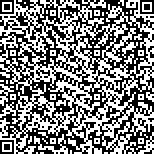刘方,宋长栋,刘恒方,等.连枷臂综合征的临床及神经电生理特点分析[J].中华物理医学与康复杂志,2021,43(1):21-24
扫码阅读全文

|
| 连枷臂综合征的临床及神经电生理特点分析 |
|
| |
| DOI:10.3760/cma.j.issn.0254-1424.2021.01.005 |
| 中文关键词: 连枷臂综合征 上运动神经元体征 分裂手现象 |
| 英文关键词: Flail arm syndrome Split hand Amyotropic lateral sclerosis Muscle action potentials |
| 基金项目: |
|
| 摘要点击次数: 6438 |
| 全文下载次数: 7644 |
| 中文摘要: |
| 目的 探讨连枷臂综合征(FAS)的临床及神经电生理特点。 方法 选取13例诊断明确的FAS患者及31例由上肢起病的肌萎缩侧索硬化(UL-ALS)患者,收集上述患者临床查体及神经电生理数据,包括正中神经、尺神经、腋神经复合肌肉动作电位(CMAP)波幅并计算分裂手比值SI值(SI值=正中神经CMAP波幅/尺神经CMAP波幅)。分析入选FAS患者临床特点及分裂手现象,并对比FAS及UL-ALS患者正中神经、尺神经、腋神经CMAP波幅。 结果 与UL-ALS患者比较,入选FAS患者发病年龄[(60.9±7.4)岁]偏大,症状进展至第二区域时间[(24±6)个月]较长;约15% FAS患者上肢腱反射消失,77%减弱,无反射活跃或亢进者,约54% FAS患者下肢反射活跃,38%减弱,上述肢体反射情况与UL-ALS患者组间差异均具有统计学意义(P<0.05)。入选FAS患者正中神经、尺神经CMAP波幅、SI值与UL-ALS患者组间差异均无统计学意义(P>0.05),两组SI值均<1。伴上运动神经元(UMN)体征的FAS患者SI值(0.41±0.26)较不伴UMN体征患者SI值(0.76±0.18)明显降低(P<0.05)。入选FAS患者尺神经CMAP波幅较大,正中神经次之,腋神经CMAP波幅较小(P<0.05),而UL-ALS患者尺神经CMAP波幅较正中神经波幅明显增大(P<0.05),但两者均与腋神经CMAP波幅无显著差异(P>0.05)。 结论 FAS是一种以上肢近端肌肉受累为主的运动神经元疾病,其病程相对缓慢,症状进展至第二区域时间超过1年(平均24个月),患者上肢反射多减弱或消失,下肢反射活跃或减弱,具有UMN体征,且存在分裂手现象,具有UMN体征的FAS患者更易出现分裂手现象,肌电图检查显示腋神经CMAP波幅明显低平,上述特点有助于临床早期诊断FAS患者。 |
| 英文摘要: |
| Objective To explore the clinical and electrophysiological characteristics of flail arm syndrome (FAS). Methods Clinical and electrophysiological data were collected on 13 FAS patients and 31 persons with upper limb onset amyotropic lateral sclerosis (UL-ALS), including the amplitude of compound muscle action potential (CMAP) related to median nerve, ulnar nerve, and axillary nerve motor conduction. A split-hand index (SI) was calculated by dividing the CMAP amplitude of abductor pollicis brevis by that of the abductor digiti minimi. Clinical features, the CMAP amplitudes and SIs were compared between the FAS and UL-ALS patients. Results Compared with UL-ALS patients, the age at onset among the FAS patients was older (averaging 60.9 years). The development to the second stage was longer (24±6 months). The upper limb reflexes of 15% of the FAS patients had disappeared and those of 77% were weakened, while the lower limb reflexes of 54% of the FAS patients were active and 38% were weakened, significantly different from the UL-ALS patients. However, there were no significant differences in the CMAP amplitudes of the median and ulnar nerves, nor in SI between the FAS and UL-ALS patients. The SIs of the FAS patients with upper motor neuron signs were significantly lower than those of FAS patients without such signs. Among the FAS patients, the average CMAP amplitude of the ulnar nerve was the highest, followed by those of the median and axillary nerves. Among the UL-ALS patients, however, the average CMAP amplitude of the ulnar nerve was not significantly different from that of the axillary nerve. Conclusions FAS patients with upper motor neuron signs are more likely to have slip hand. The CMAP amplitude of their axillary nerve tends to be lower than that of their median and ulnar nerves. FAS seems to be a special type of ALS. |
|
查看全文
查看/发表评论 下载PDF阅读器 |
| 关闭 |
|
|
|